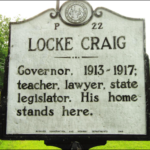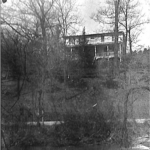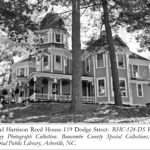By Starlett Russell Craig
I grew up in the looming shadow of the “Castle on the Hill”. My street still stands but for the cause of urban renewal, the house that I lived in has long been demolished. Looking back, my neighbors and friends on Circle Street were like family. Through their extensions and the teenagers living in the various homes, I had a connection to Stephens Lee High.
Before I understood the rich culture of academic excellence, I also heard my mother speak of her alma mater with great admiration. Stephens Lee High, a place where leaders were developed and honesty and integrity were core values. Why else would it be called the “Castle on the Hill” if her students didn’t understand that we were kings and queens destined for greatness in a world outside those hallowed walls.
A favorite pastime during summer vacation, was to look through the yearbooks, identify students,clubs and organizations and listen to my teenage neighbors talk about their Stephens-Lee experience. By the time I entered high school, I had a definite familiarity with the expectations of teachers.. Those idyllic days of learning in an environment where my teachers gave their best and expected the best often come back to me in my dreams.
“Isn’t it strange how princes and kings,
and clowns that caper in sawdust rings,
and common people, like you and me,
are builders for eternity?”
My mother often spoke of many successful alumni who were her contemporaries in the graduating class of 1941. It is significant to note that leaders and critical thinkers of the civil rights era had ties to Stephens-Lee High. One of the legends of that generation was Mr. Floyd McKissick, Class of 1939, the first African American to be admitted to the law school at the University of North Carolina at Chapel Hill and the second president of the Congress of Racial Equality (CORE).
Mr. McKissick’s sister was my mom’s classmate. Our family dentist and my homeroom teacher were also her classmates. Successful alumni were all around the country and living in my hometown. They were civil rights icons of the 60s,doctors, lawyers, teachers, entrepreneurs, and world travelers. I was the beneficiary of these stories of excellence as a child growing up. It would have been difficult not to be totally aware of the culture of high standards and achievement with my mother’s voice constantly reminding me of these living legends. She valued education and understood that in our town, Stephens-Lee High was the launching pad for scholarly achievement.
For me higher education was built on a solid foundation established by master teachers who were by every standard remarkable men and women. They enabled me to explore career options while exposing me to a world of possibilities and a pathway to college on a full scholarship. The scholarship had been established by four successful Stephens Lee High alumni, and was named, The Holt-Manley-Wilburn-Young Scholarship. I was the second recipient of that scholarship and the benefactor of an enduring legacy of servant leadership. I entered Spelman College knowing that someone had been there before me.
Dr. Albert E. Manley served as the second principal of Stephens-Lee High (1935-1941) and later the first African American and the first male to become president of Spelman College. His accomplishments are legendary as he led Spelman College through a building period during his twenty-three year tenure. Nurturing the Stephens-Lee- Spelman connection,this visionary leader was a staunch advocate for equality and education.
To say that I stand on the shoulders of giants would be an understatement without clarification. My giants were pioneers in education who prepared their students for a smooth transition from segregation to integration in Asheville, NC.
“Each is given a list of rules;
a shapeless mass; a bag of tools.
And each must fashion, ere life is flown,
A stumbling block, or a
Stepping Stone.
R. Lee Sharpe
The “Castle on the Hill” was the launching pad for many of my classmates. We were the largest graduating class and the last group of eager young men and women to walk the halls of this center of learning. Today we no longer hear the “echo in the hall” but we continue to listen to the clarion call to save our youth. To be catalysts for change and advocates for social justice and education enrichment is to be a Stephens -Lee ambassador. We who are Stephens-Lee High alumni have a rich heritage and an enduring legacy. We must continue to tell our story lest we forget the impact of Stephens Lee High, a beacon of light for African American students living in Western North Carolina from 1923-1965.



